This guide highlights Trinidad and Tobago’s common savanna and grassland bird species. It will deal with those species that frequent open grass fields, pastures, savannas and other similar environments.
Red-breasted Meadowlark (Local Name: Soldier Bird):
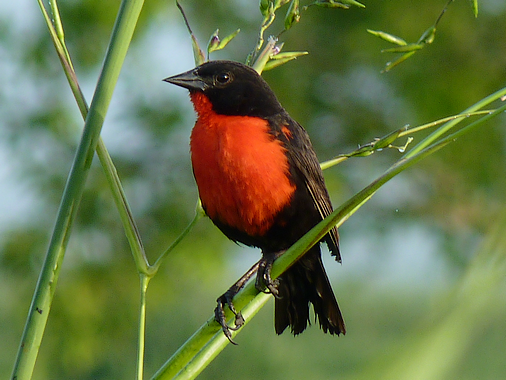
This stunning member of the blackbird family is common in wet pastures and grassy fields. Formerly known as the Red-breasted Blackbird, male birds sport a brilliant red breast while females are streaked with brown and cream. Not found in Tobago. Males can sometimes be seen displaying, during which the bird flies up into the air and glides back to the ground while singing.
Blue-black Grassquit (Local Names: Grassie or Johnny-jump-up):
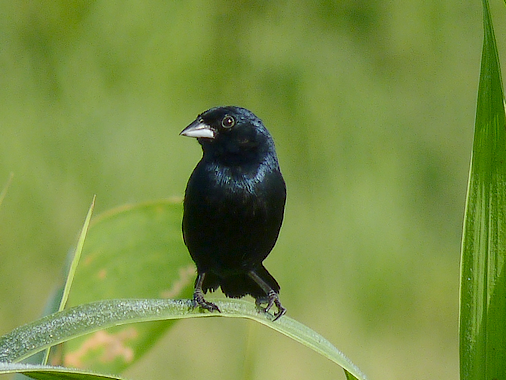
The grassquit is a very common inhabitant of grasslands and open habitats where they feed on seeds. Male birds are very dark blue in colour while females are brown with heavy chest streaking. Males are often seen displaying from an exposed perch during which the grassquit “leaps” into the air while calling. Despite their similar appearance, diet and choice of habitat, Grassquits are not members of the finch family.
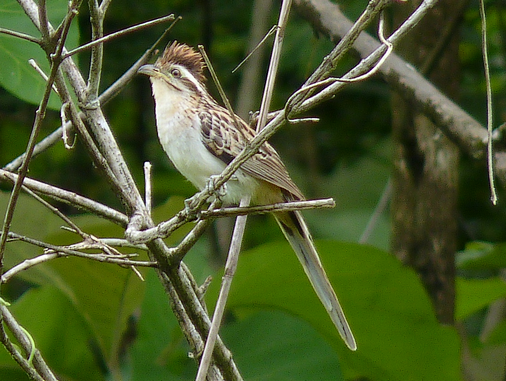
The call of the Striped Cuckoo is a familiar sound in open areas and is usually the first clue that this species is nearby. It is heavily streaked with brown and cream and has a shaggy brown crest which it raises when it calls. This is the only local cuckoo species that practices nest-parasitism for which the cuckoo family is infamous. It usually targets the nests of Spinetails.
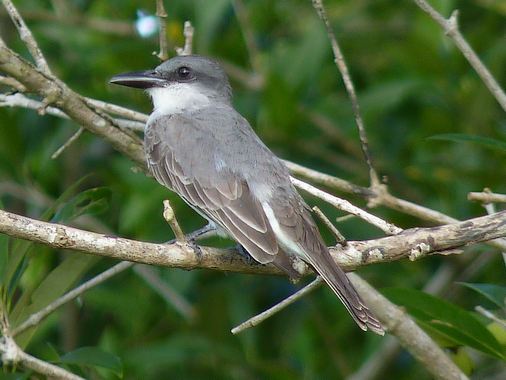
This relative of the more commonly seen Tropical Kingbird can be identified by its larger bill and overall body size. It is gray in colour with darker upperparts.
Fork-tailed Flycatcher (Tyrannus savana)
This graceful flycatcher is a common visitor to Trinidad and Tobago during the latter months of the year. The males are best known for their long tail feathers which can extend several inches from the body. Large flocks of these birds can be seen flying to their roosting sites in the late evening, often in mangrove swamps or isolated trees. They are very aggressive and will chase other bird species that happen to fly by.
Green-rumped Parrotlet (Local Name: Parakeet):
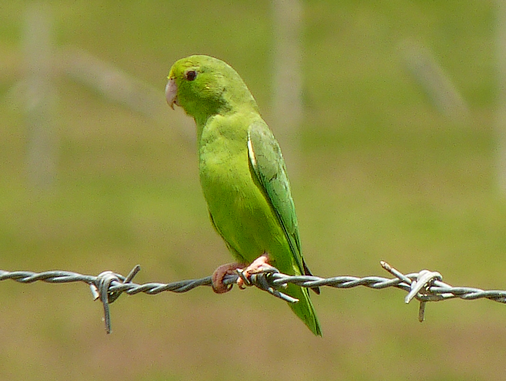
Green-rumped Parrotlet (Forpus passerinus)
This small member of the parrot family is common in many habitats in Trinidad and Tobago. Apparently unknown in Trinidad before 1916 which could indicate it was a recent arrival. Birds were then introduced to Tobago. Despite being commonly trapped for the pet trade, the local population does not appear to be in any danger as yet. Males and females are not easily distinguished from each other, both being generally green with blue feathers on the wing. A pair can sometimes be seen around a house searching for nesting sites, usually in pipe scaffolding or similar cavities.
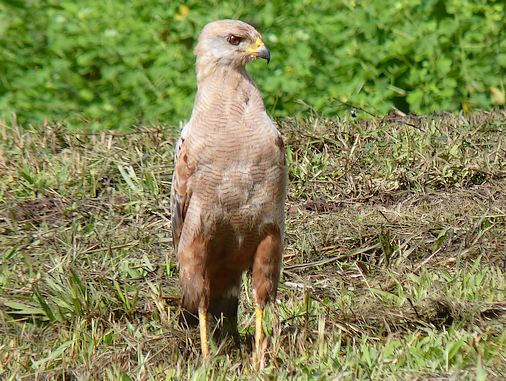
The Savanna Hawk is a beautiful member of the raptor family that can often be seen in open cattle pastures and coconut estates, especially in areas such as Mayaro, Manzanilla, Icacos, Wallerfield and Piarco. Unlike most other hawks, the Savanna Hawk spends a lot of time on the ground in search of its prey which includes lizards and snakes. It is chestnut-brown with dark wings and can otherwise be identified by its upright posture and its long legs, which facilitates movement through the short grass. These hawks frequently perch on posts or tree stumps.
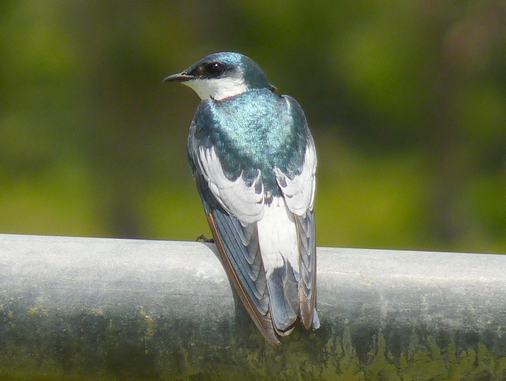
This small swallow is often seen flying swiftly low over savannas or waterways while hunting for their insect prey. It is white with an iridescent blue-green cap and upper back. Its name is derived from a patch of white feathers on its otherwise dark wings, visible when the bird is in flight. It nests in cavities and will take advantage of man-made structures such as pipe scaffolding in pavilions.
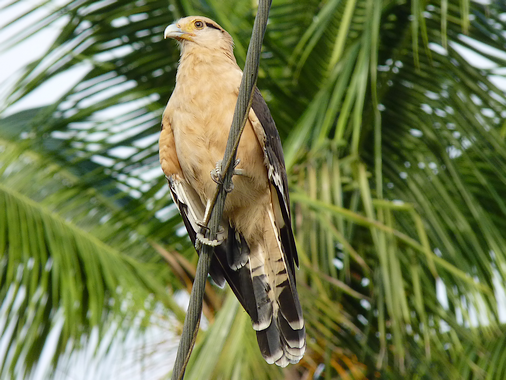
While similar in appearance to hawks, Caracaras are actually members of the Falconidae, which includes kites and falcons. Unlike the other members of this family, caracaras have specialized in feeding on carrion. For this reason the yellow-headed caracara is able to inhabit a diverse range of habitats and can often be seen along roadways looking for road kill. They are often found in small groups and have a very loud screeching call. Adults have a creamy yellow-brown head and under-parts with dark brown wings that are crossed by a single pale bar. Immature birds are heavily streaked.
Ruddy-breasted Seedeater (Local Name: Robin):
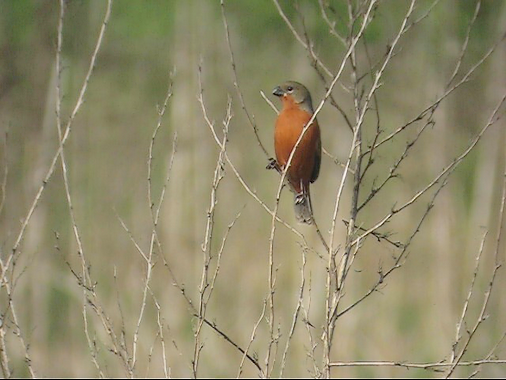
The Ruddy-breasted Seedeater was formerly an extremely common resident of grasslands in Trinidad and Tobago. Unfortunately the “Robin” is valued as a cage-bird because of its singing ability. Constant pressure by bird-catchers has almost driven this bird to extinction in Trinidad & Tobago and only a few scattered populations remain. Despite being illegal, many bird owners still keep “Robins”.
Other local finches, including the Gray Seedeater (Picoplat) and Chestnut-bellied Seed Finch (Bullfinch), have not been so lucky and all local populations of these species have been wiped out. Occasionally birds are seen in the wild but these are usually escaped cage-birds or birds that have been rescued from bird-smugglers and released by the Forestry Division. Unfortunately as these birds are likely to all be males, no breeding population can be established. While it is legal to keep both the “Bullfinch” and “Picoplat” in cages, large numbers of these birds are illegally smuggled into the country via the south-western peninsular and these birds account for almost all finches currently being kept in Trinidad and Tobago.
